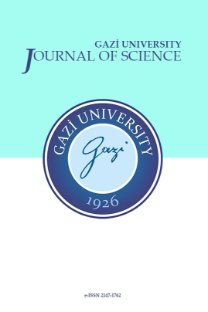Locational Characteristics and Impact of Attenda Abattoir, Ogbomoso, Nigeria
Locational Characteristics and Impact of Attenda Abattoir, Ogbomoso, Nigeria
Locational characteristics Landuse, Environmental impact, Pollution,
___
- [1] Alonge, D. O., Textbook of Meat Hygiene in the Tropics, Ibadan, (1991).
- [2] Lewis, R. J., Hawleys Condensed Chemical Dictionary, 12th Edition, New York, (1993).
- [3] Chukwu, O., “Analysis of Groundwater Pollution from Abattoir Waste in Minna, Nigeria”, Research Journal of Dairy Sciences, 2(4): 74-77, (2008).
- [4] Edwards, E., Hector, O.A., Norman, G.A., Silverside, D., “Slaughter Facilities for Tropical Conditions: A Guide to the Selection and Costing of Appropriate Systems”, London, (1979).
- [5] Sangodoyin, A.Y., Agbawhe, O.M., “Environmental Study on Surface and Ground Water Pollutants from Abattoir Effluents”, Bioresource Technology, 1(41): 193-200, (1992).
- [6] Oyedemi, D.T.A., “The Impact of Abattoir Location and Management on Surrounding Residents in Ibadan, Nigeria”, Masters of Technology Thesis, Ladoke Akintola University of Technology, Ogbomoso, 12-25, (2000).
- [7] Magaj, J.Y., and Chup, C.D., ‘The Effects of Abattoir Waste on Water Quality in Gwagwalada, Abuja Nigeria”, Ethiopian Journal of Environmental Management, 5(4): 51–63, (2012).
- [8] https://www.thedailystar.net/health/what-should-be-the-ph-value-drinking-water-138382. Access Date: 13.04.2020
- [9] https://www.webmd.com/food-recipes/food-poisoning/what-is-e-coli#1. Access Date: 13.04.2020
- [10] Sridhar, M.K.C., Government/Private Sector Partnership. Effective Tool for Solid Waste Evacuation and Management., Prost Publishing, Nigeria, (1988).
- [11] Ezeoha, S. L., “Pollution and Biogas Production Potentials of Abattoir Wastes”, Masters of Engineering Project Report, University of Nigeria, Nsukka, 10-35, (2000).
- [12] Raymond, C. L., Pollution Control for Agriculture, Academic Press Inc., New York, (1977).
- [13] Tove, S., “Slaughter House Cleaning and Sanitation”, Animal Product and Health Paper No 53, Food and Agricultural Organization, 15-45, (1985).
- [14] Caterina, L., Lucia, B., Rossella, B., Elisabeth, G., Simon, T., and Valter, T., “Salmonella in Surface and Drinking Water: Occurrence and Water-mediated Transmission”, Food Research International 45(2): 123-130, (2012).
- [15] http/www.Irishstatutebook/1988/en/act/pub/0008/index. Access Date: 12.05.2021
- [16] https://www.medicalnewstoday.com/articles/68511. Access Date: 13.04.2020
- Yayın Aralığı: 4
- Başlangıç: 1988
- Yayıncı: Gazi Üniversitesi, Fen Bilimleri Enstitüsü
Natural Language Processing Challenges and Issues: A Literature Review
Abdul Ahad ABRO, Mir Sajjad Hussain TALPUR, Awais Khan JUMANİ
Locational Characteristics and Impact of Attenda Abattoir, Ogbomoso, Nigeria
Samson OLANREWAJU, Fadila GARBA, Yetunde BABAYEMİ
Olga Nehir ÖZTEL, Hilal YILMAZ, İsmail Alper İŞOĞLU, Adil ALLAHVERDİYEV
The study on QSAR and relations between molecular descriptors of 5, 8-quinoline quinones derivatives
Yadigar GÜLSEVEN SIDIR, İsa SIDIR
Nurkhalida KAMAL, Hazniza ADNAN, Jalifah LATİP
Classes of Population Mean Estimators using Transformed Variables in Double Sampling
Natthapat THONGSAK, Nuanpan LAWSON
Ertuğrul AYYILDIZ, Gökhan ÖZÇELİK, Cevriye GENCER, Emrullah DEMİRCİ
Magnetic Separation of Micro Beads and Cells on a Paper-Based Lateral Flow System
